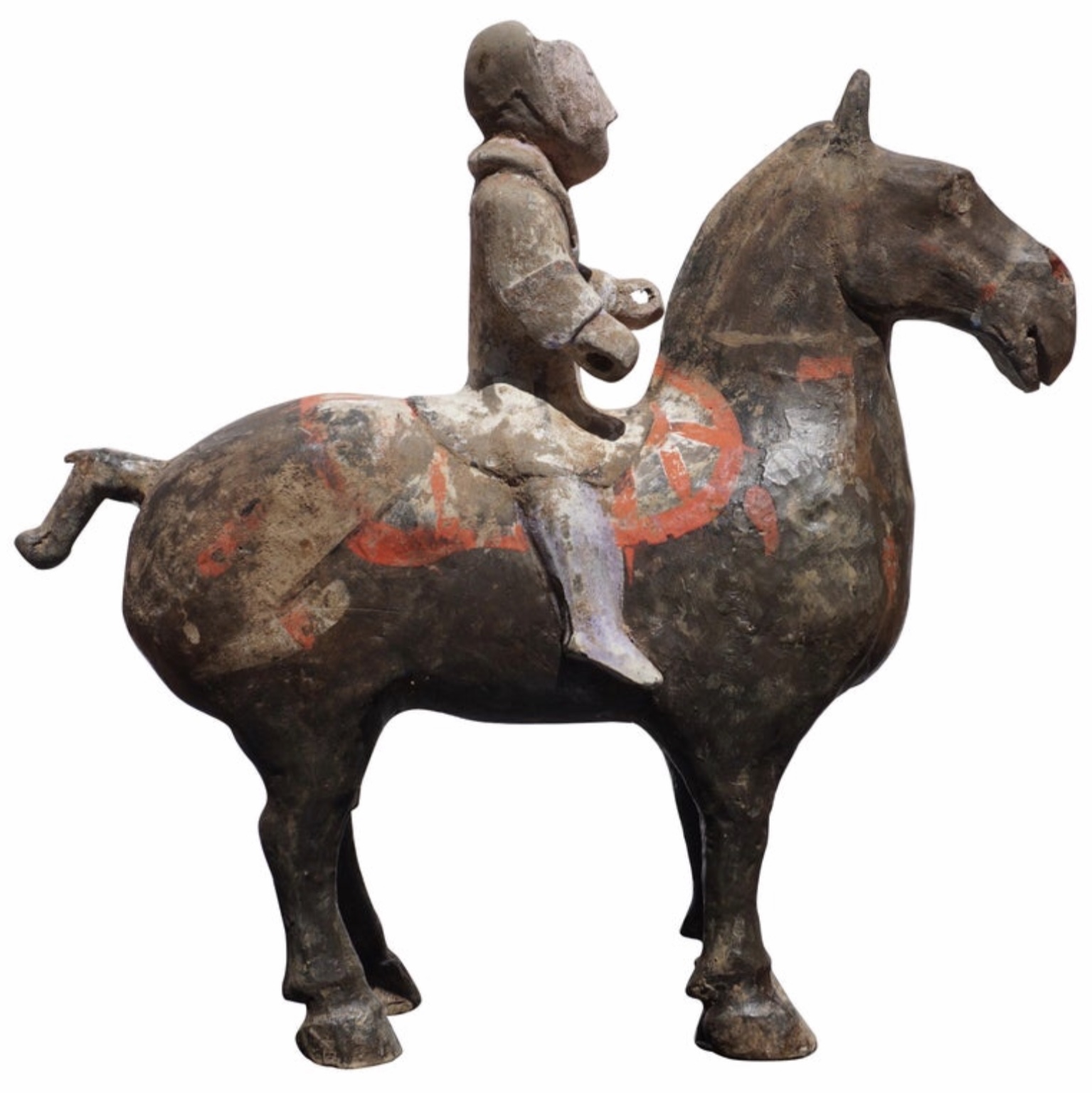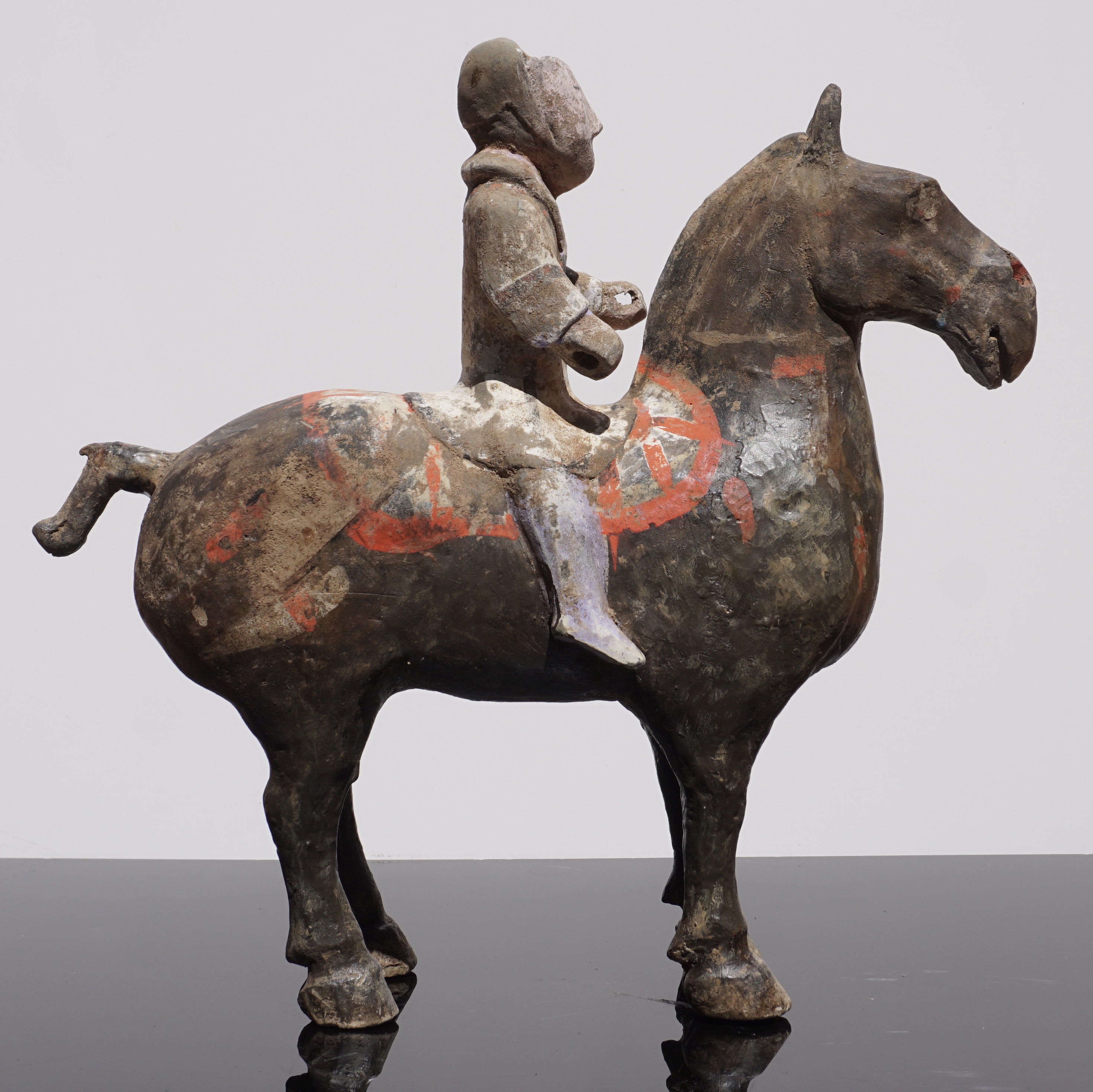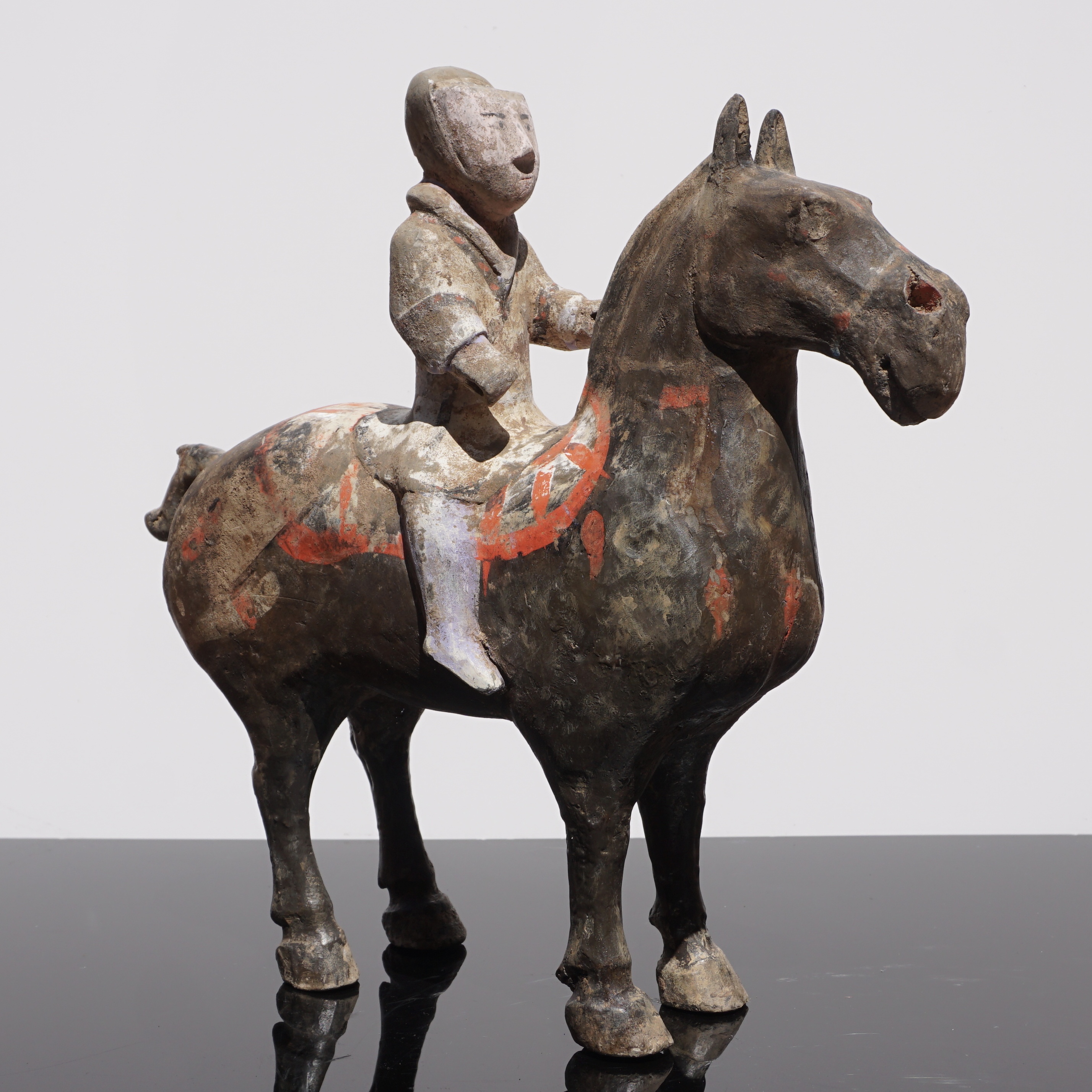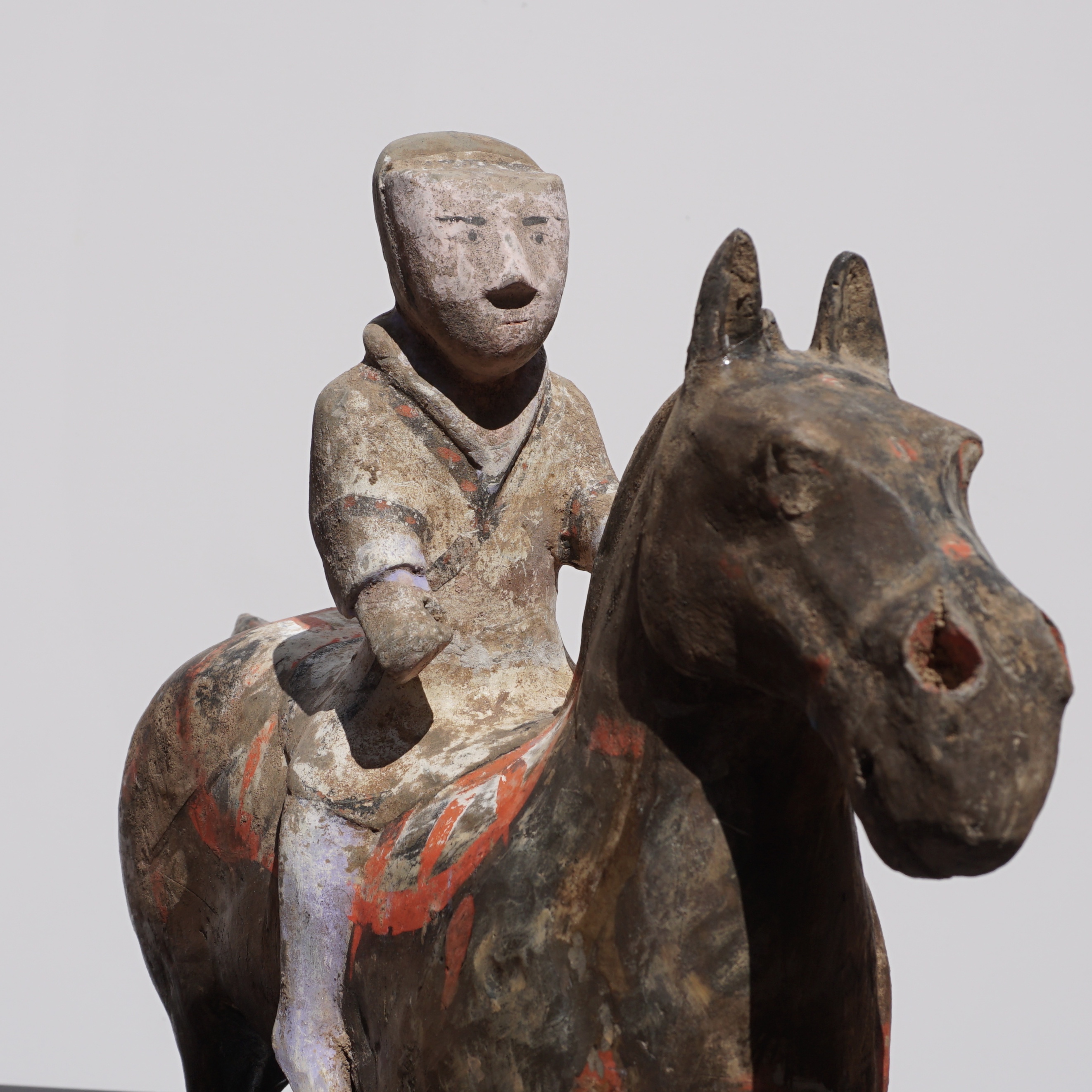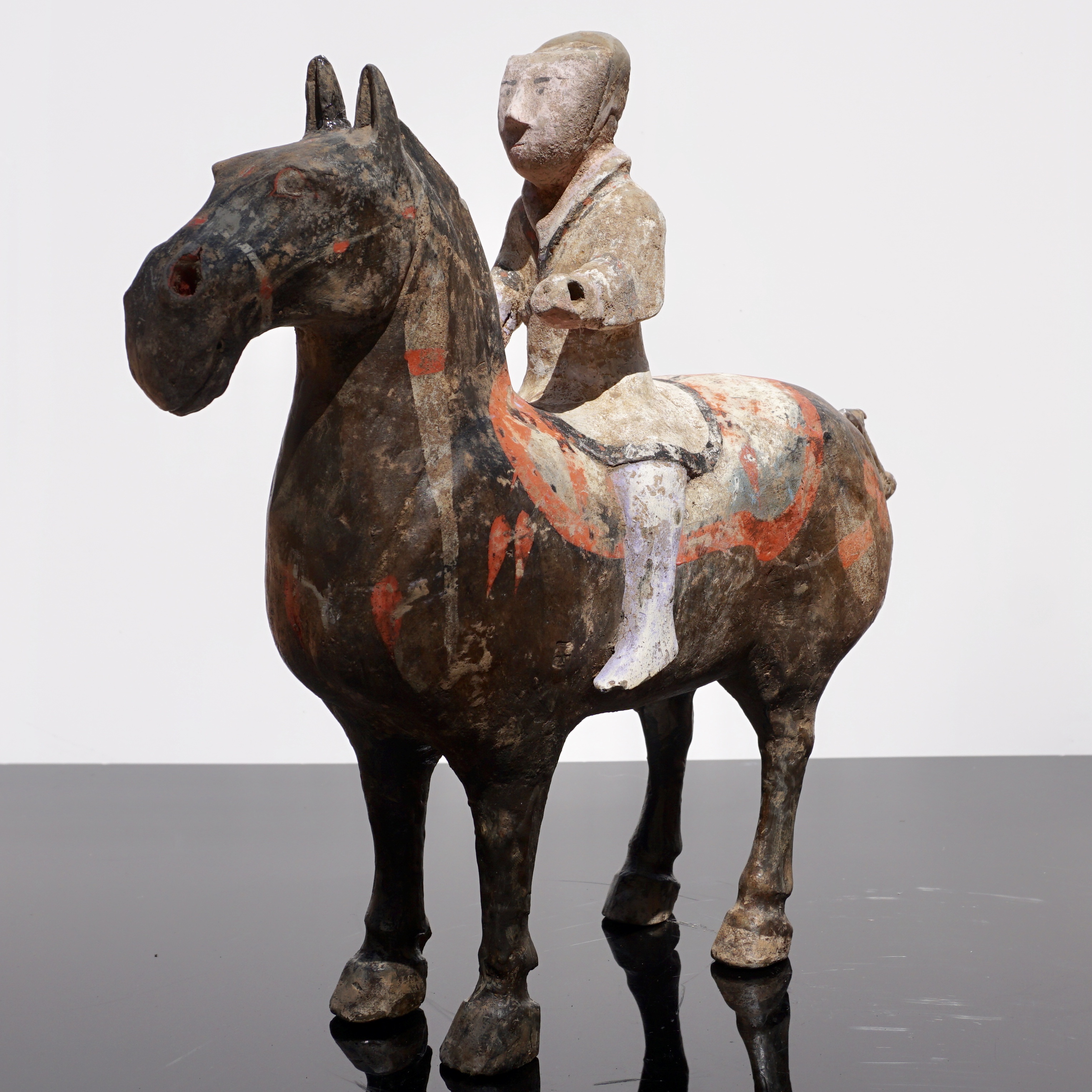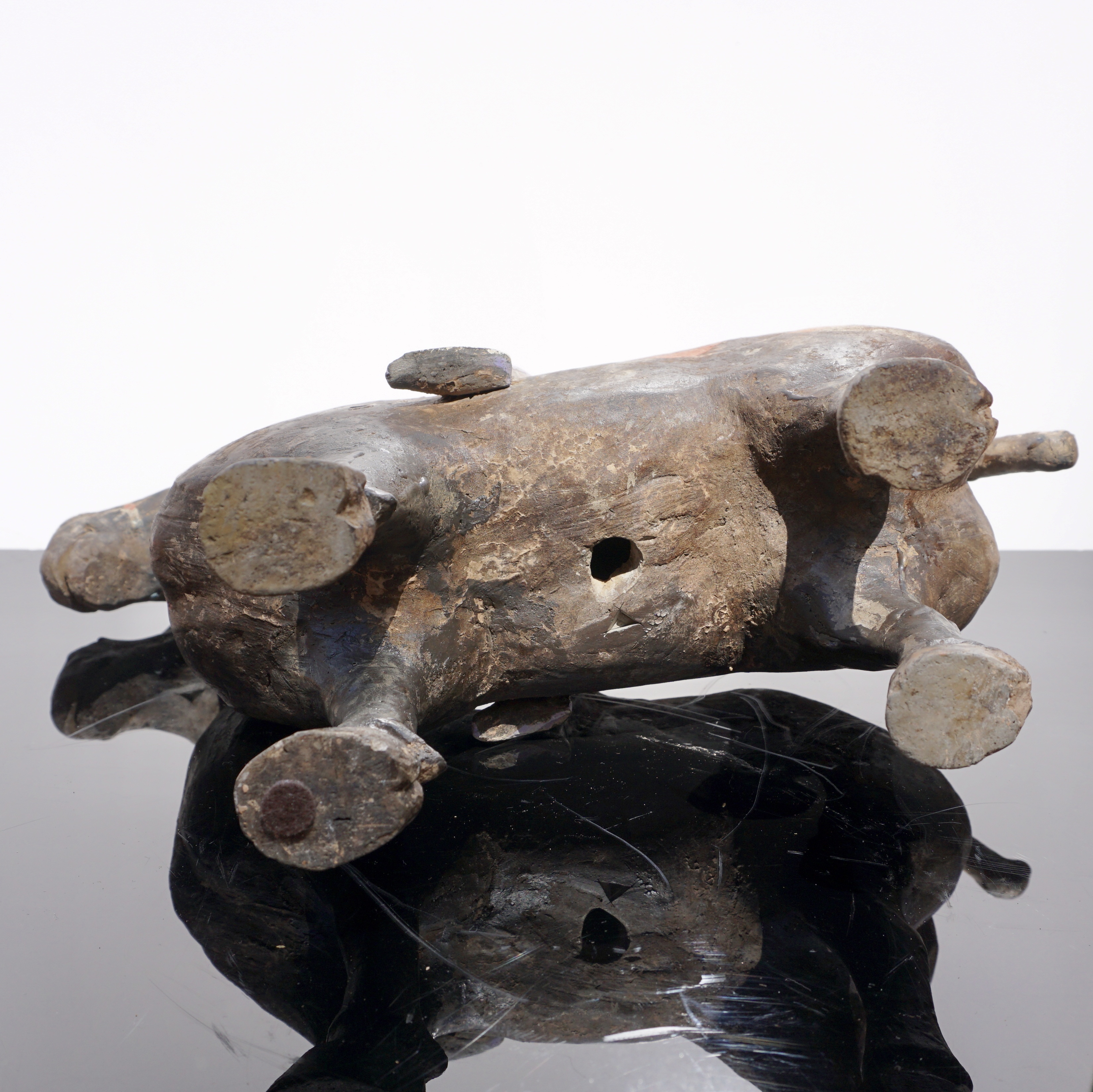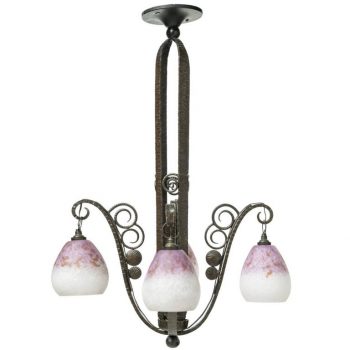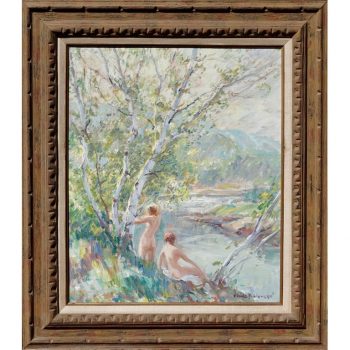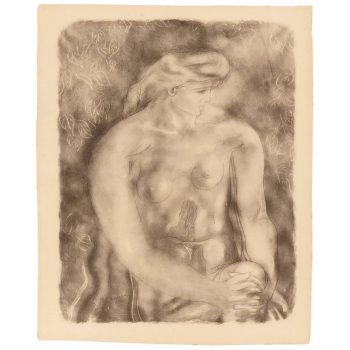Description
A Chinese painted grey pottery horse and rider, Shaanxi province. These tomb statues were common for over a thousand years and were to accompany the deceased in the afterlife for those who were affluent.
Western Han dynasty (206 BC-220 AD)
The male groom riding astride a dark horse with well-detailed saddle, standing foursquare, well-modeled with alert ears and flared nostrils. Legs and right haunch show areas of restoration.
The results of the Chinese University of Hong Kong thermoluminescence test, #M291, dated October 24, 2000, are stated to be consistant with the suggested date of manufacture. TL Test included.
Measures: Height 12.7 inches. 32 cm
Provenance: Arch Angel Antiques, Hong Kong Property of a Virginia collection, acquired from the above, 2000
The Han dynasty was the second imperial dynasty of China (206 BC–220 AD), preceded by the Qin dynasty (221-206 BC) and succeeded by the three kingdoms period (220-280 AD). Spanning over four centuries, the Han period is considered a golden age in Chinese history. To this day, China’s majority ethnic group refers to themselves as the “Han Chinese” and the Chinese script is referred to as “Han characters”. It was founded by the rebel leader Liu Bang, known posthumously as Emperor Gaozu of Han, and briefly interrupted by the Xin dynasty (9-23 AD) of the former Regent Wang Mang. This interregnum separates the Han dynasty into two periods: the Western Han or Former Han (206 BC – 9 AD) and the Eastern Han or Later Han (25-220 AD).


